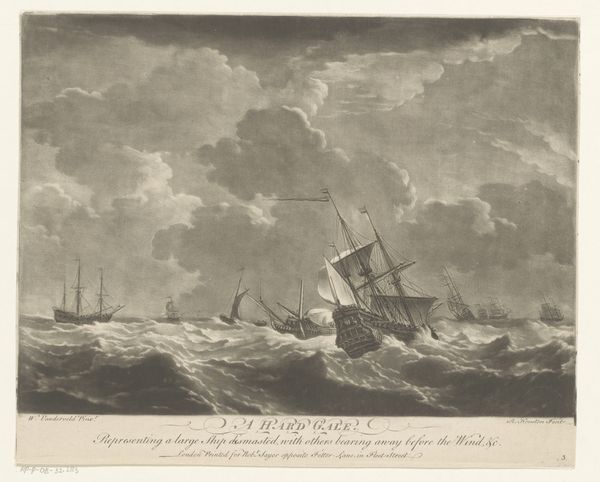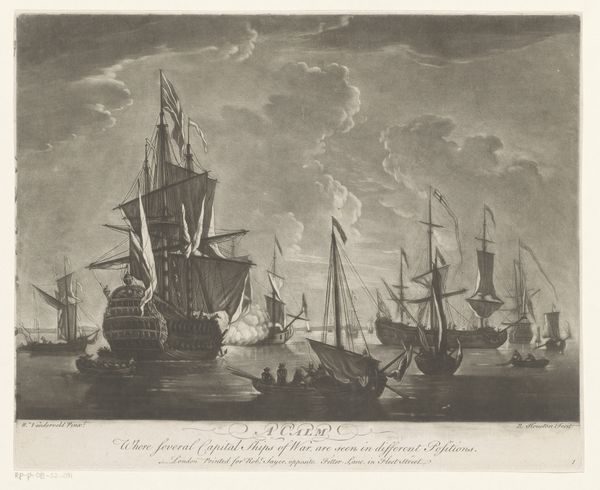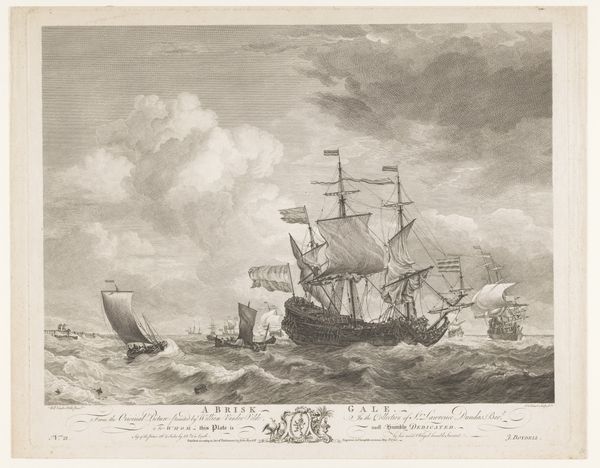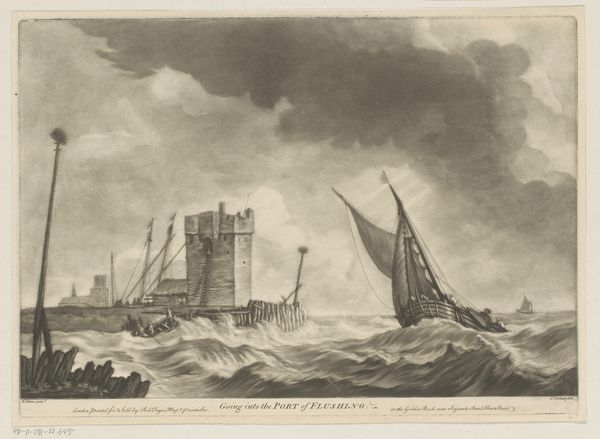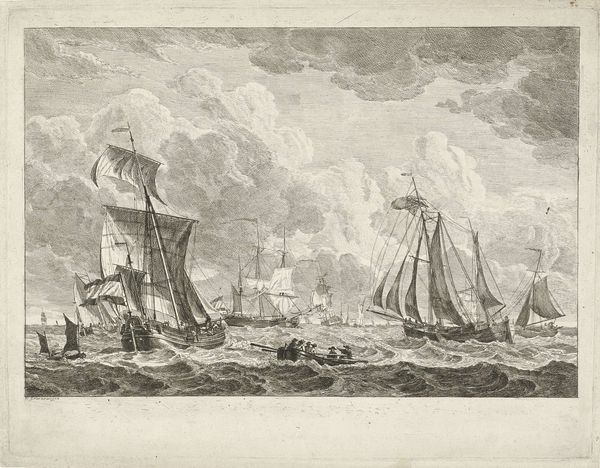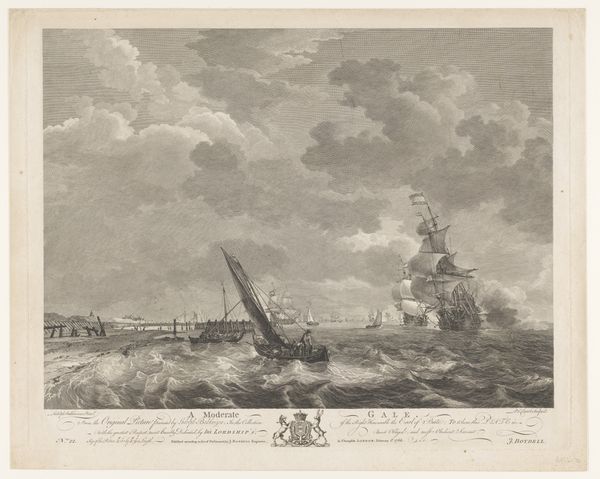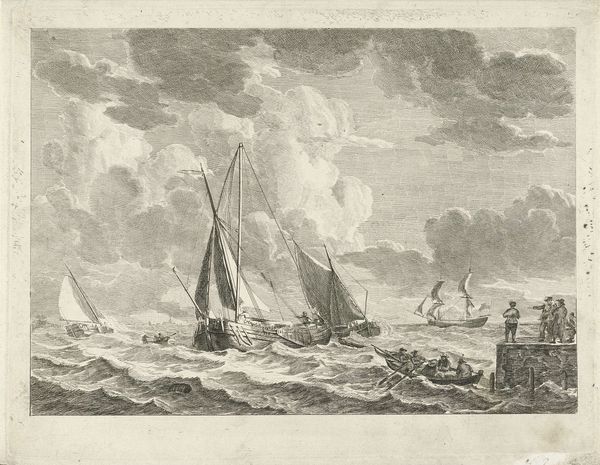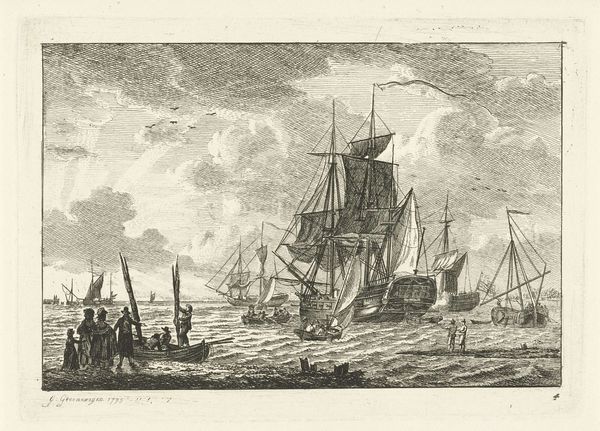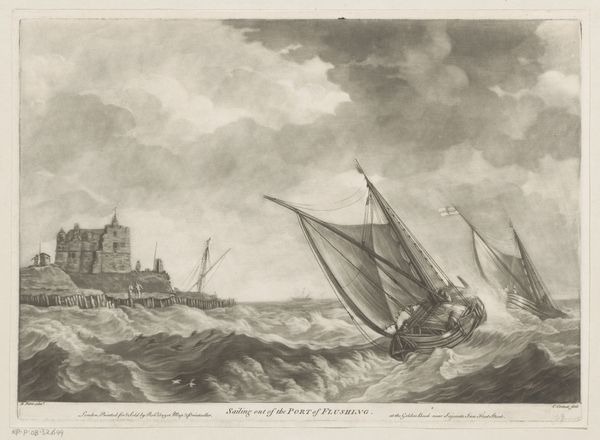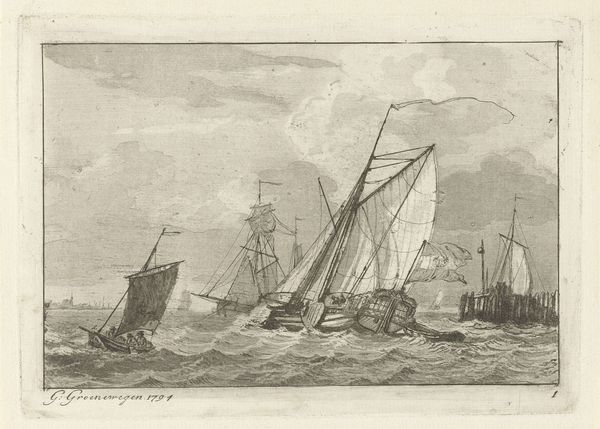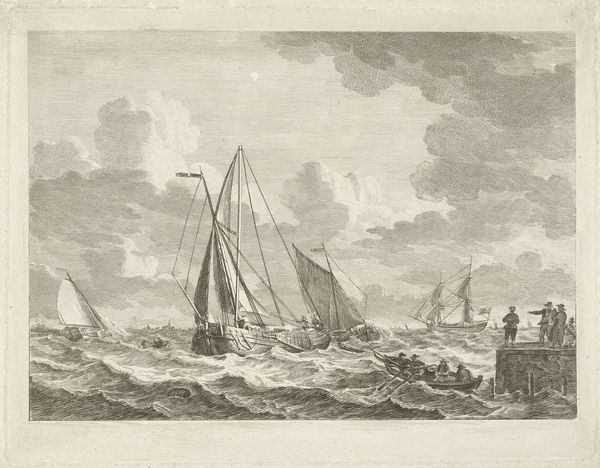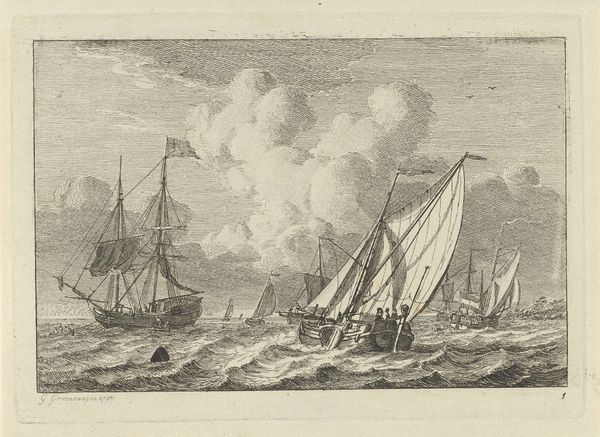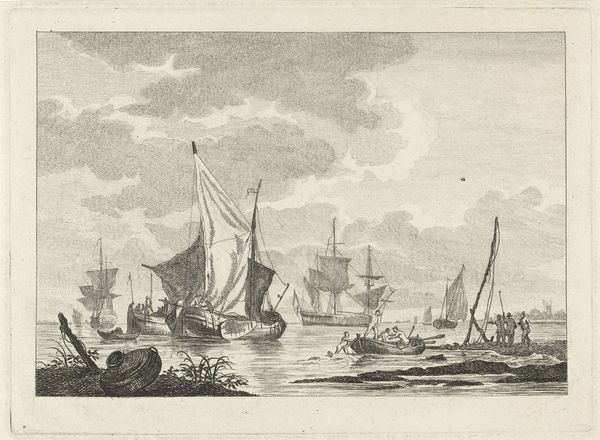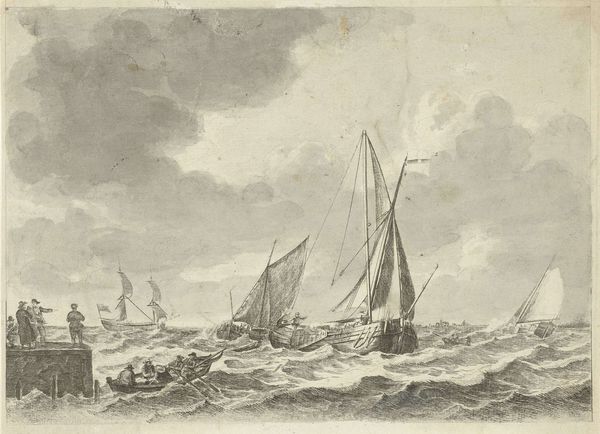
Dimensions: height 253 mm, width 314 mm
Copyright: Rijks Museum: Open Domain
Curator: Before us is "Vloot op een onrustige zee," or "Fleet on a troubled sea," an engraving dating somewhere between 1745 and 1794. Editor: Troubled indeed. The scene is overwhelmingly ominous—dark skies, churning water. You almost feel the damp chill coming off the print. It’s a powerful first impression of chaos. Curator: The artist, Richard Houston, masterfully utilizes the monochrome palette to convey this drama. Look at the contrasting values: the almost blinding highlights on the waves versus the deep shadows under the ships. The tonality creates form, lending dimension to an otherwise flat medium. Note also the line work suggesting texture. Editor: Those ships, with their English flags so prominently displayed, become symbolic, don’t they? This isn’t merely a seascape; it's a representation of England's naval power braving adversity, maybe even a hint of impending conflict. I mean the cloudscape looks very apocalyptic. Curator: Yes, observe the organization of shapes and forms. The vessels closest to us lead the eye to ships placed horizontally across the central view of the artwork and eventually receding, quite deliberately, into the hazy distance. Compositionally, there is visual movement and stability. The overall organization generates tension but manages, paradoxically, to also establish stasis, creating interest to this print. Editor: And even the title, "A Fresh Gale?", implies a challenging environment, doesn't it? "Fresh" might be sarcastic. Think of the symbolic weight of the sea itself - a vast, untamable force. These ships sailing on the open sea could symbolize trade and discovery or invasion and colonialism. Curator: Well said! One of the interesting features of the style is the tension between the rough sea and meticulously presented ships. We see almost no surface differentiation among these large ships. One cannot guess whether they're battleships, trading vessels or perhaps the artist has conflated the role of one with the other. It could signify the unification of economic and political British aspirations. Editor: Absolutely, and to add, I am reminded that ships are so often vehicles of cultural exchange—both voluntary and coerced—navigating both opportunity and danger on that churning sea. Curator: Indeed. There is so much here for further interpretation, even just based on its formal qualities. The artist creates dynamic engagement on an image, drawing viewers in, giving it so much texture. Editor: And it all seems deeply embedded in both historical context and symbolic meaning, where we perceive a narrative, not just visual delight.
Comments
No comments
Be the first to comment and join the conversation on the ultimate creative platform.
